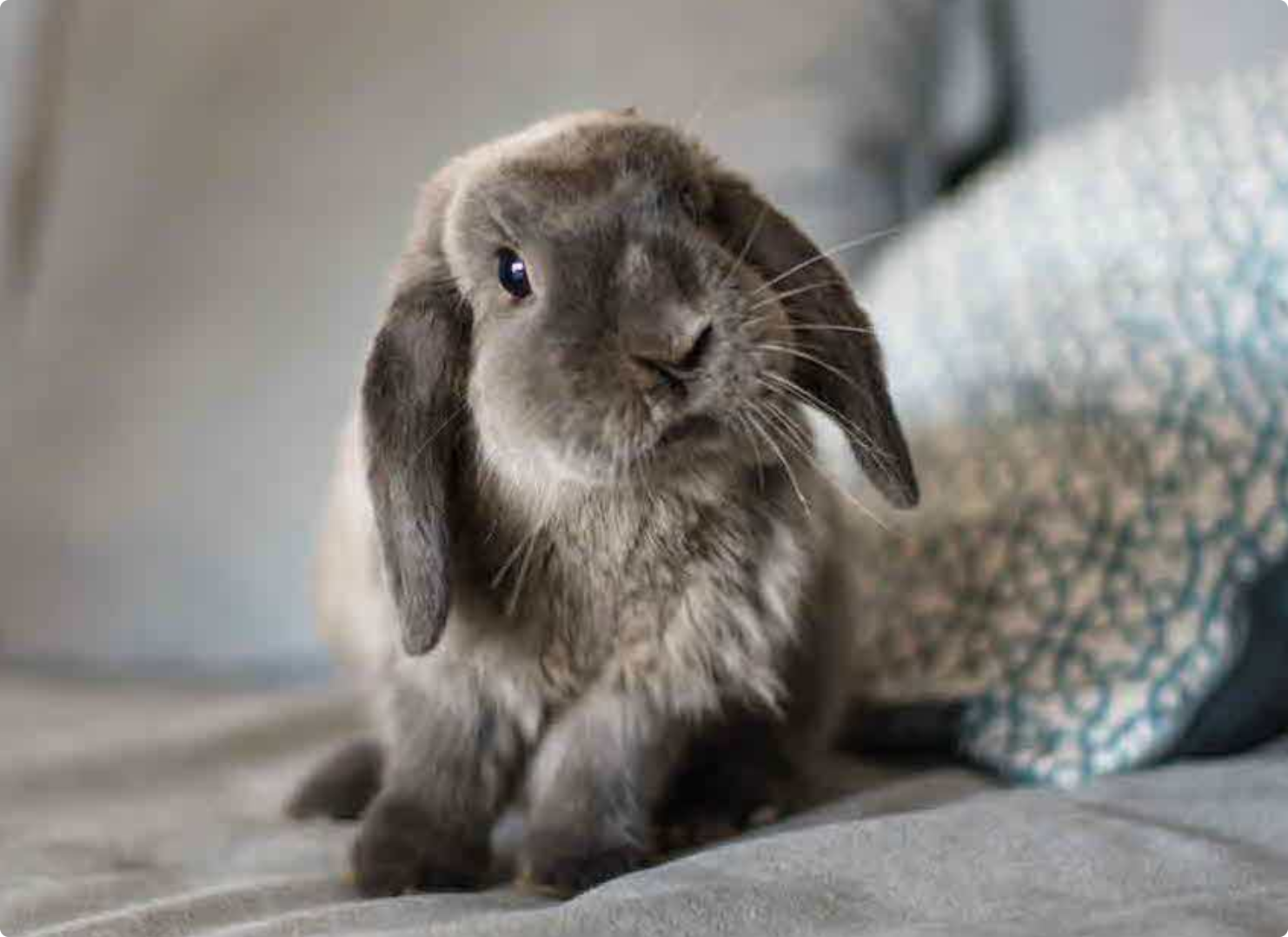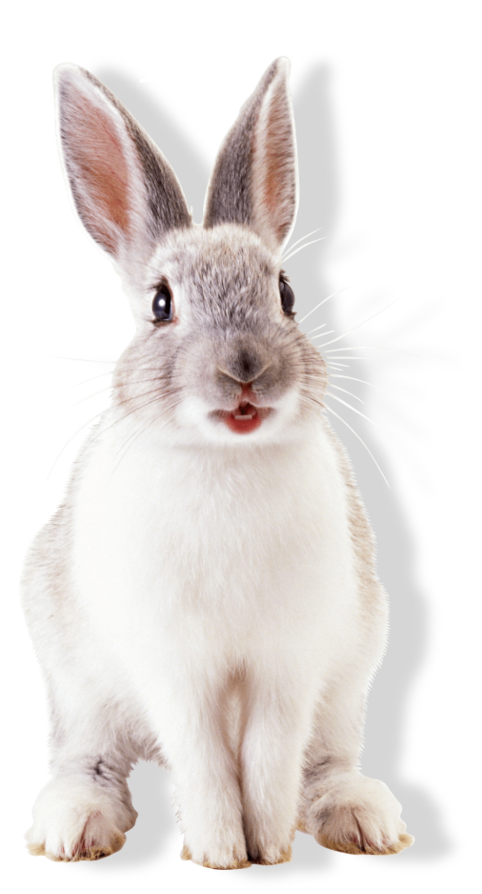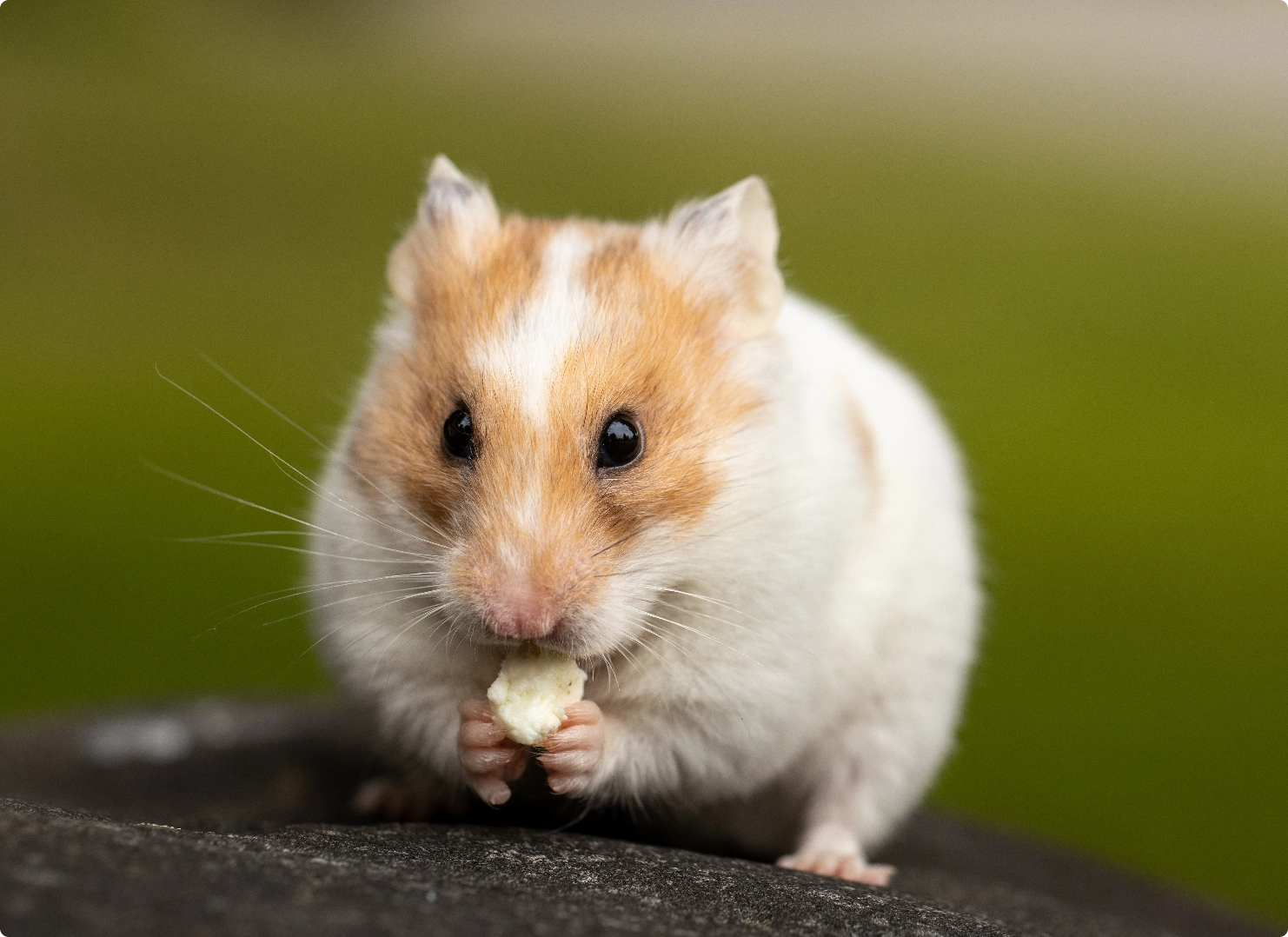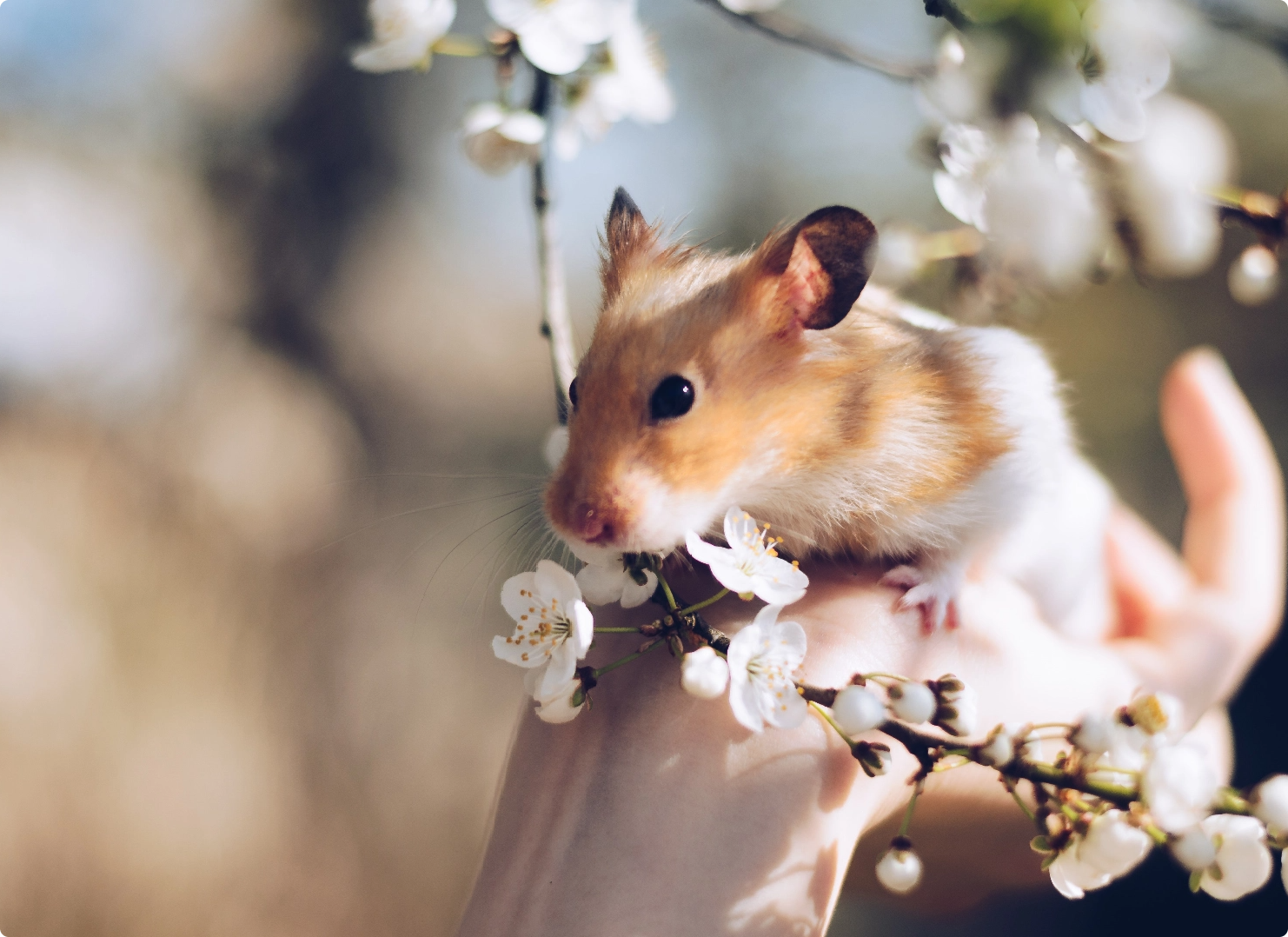
Living With a House Rabbit: Bunny Basics



Living With a House Rabbit: Bunny Basics
Many people are discovering the joys of sharing their homes with one or more rabbits, they are intelligent and playful, can be easily litter-trained, and make wonderful indoor companions.
A bunny owner needs patience, creativity to block or hide things a rabbit might want to chew (such as electrical cords), and a willingness to get down on the floor to interact with a bunny on its own level.
Housing:
Essential supplies for all indoor rabbit habitats include a water bottle or bowl, feed bowl, hay, and toys. Bowls need to be heavy enough not to be tipped over.
Provide a litter box with organic litter, do not use softwood shavings such as pine or cedar, it is also helpful to attach the litter pan to the cage with clips, wire, or 2.5-cm.
Wire floors may be removed with J-clip removers.
Alternatively, a variety of materials can be used to cover the wire floor including carpet remnants, grass mats, synthetic sheepskin, and toweling.
Grass mats are perfect for nibbling but if your bunny starts to chew on other floor coverings, replace them with a different item.
Cage Furniture:
If there is sufficient height between the cage floor and ceiling, shelves may be added to serve as resting places, lookouts, or a source of exercise.
A flat-roofed box of wood or cardboard within the cage can provide the same functions while also serving as a hide box for the bunny.
A hooded litter box or a pet carrier can be placed in the “bunny room” when your rabbit needs privacy. (Make sure that your bunny does not eat the plastic carrier or litter box).
Clipping a small piece of Plexiglas to the cage wire behind the hay container will keep hay inside the cage.
A 10-cm (4-in) piece of Plexiglas may also be placed along the cage bottom to deflect urine or debris.

Temperature and Humidity:
![]() Place the cage in the coolest, least humid area of the house away from heat and drafts.
Place the cage in the coolest, least humid area of the house away from heat and drafts.
![]() A temperature range of 16-21°C (60-70°F) is ideal for pet rabbits. Temperatures in the upper 80s and higher can potentially cause fatal heat stroke, during hot weather, leave a frozen bottle of water in the cage and wet down the ears to help cool the bunny.
A temperature range of 16-21°C (60-70°F) is ideal for pet rabbits. Temperatures in the upper 80s and higher can potentially cause fatal heat stroke, during hot weather, leave a frozen bottle of water in the cage and wet down the ears to help cool the bunny.
![]() Cool tiles can also be offered as a refreshing spot on which rabbits can lie in warm weather.
Cool tiles can also be offered as a refreshing spot on which rabbits can lie in warm weather.
Bunny Proofing Your Home:
Bunny proofing your home is part of living with a house rabbit. It is natural for rabbits to chew on furniture, rugs, drapes, and, most deadly of all, electrical cords. Young rabbits (< 1 year of age) are more inclined to mischief and require more confinement and/or bunny proofing than mature rabbits.
Since bunny proofing can be extensive, it is recommended to confine house rabbits to one or two rooms instead of allowing access to the entire home.
It is imperative that electrical cords be hidden or covered with tubing or hard plastic casing since one bite by your bunny could be fatal. Arrange furniture to hide cords and electrical outlets, you can also conceal cords within vinyl tubing, found at hardware stores, so that the rabbit cannot reach them.
Place grass mats on the floor to protect carpet or rugs.
Gates, such as those used to keep children and dogs out of certain areas, are another way to create a safe area for your bunny. If your rabbit seems overly interested in chewing the gate, try decorating it with permitted chew toys (see below) as a diversion.
Remove poisonous plants and other toxic substances as well as any small objects that could be ingested from the rabbit area.
Provide plenty of attention and offer safe, chewable items so that your rabbit is distracted from furniture and rugs.
Give Your Bunny a Healthy Diet:
A balanced rabbit diet consists of fresh hay, good-quality pellets, and fresh vegetables, anything beyond this considered a “treat” and should be offered in limited quantities.
Hay is essential for rabbit health as the roughage provided by hay reduces the risk of gastrointestinal problems. Untreated wood twigs also provide roughage.
Pellets should be fresh and relatively high in fiber (20-25% minimum crude fiber).
Offer a variety of pesticide-free vegetables, including leafy greens and root vegetables.
Add one vegetable to the diet at a time. Eliminate any item that causes soft stool or diarrhea.
Recommended Vegetables:
Alfalfa – Radish & Clover Sprouts – Celery – Mint – Raspberry Leaves – Basil – Cilantro – Parsley – Spinach – Beet Greens (Tops) – Clover – Pea Pods (Flat Edible Kind) – Watercress – Bok Choy – Dandelion Greens & Flowers – Peppermint Leaves – What Grass – Brussels Sprouts – Escarole – Radicchio – Carrot Tops – Green Peppers – Radish Tops
7 Months to 1 Year:
GRADUALLY introduce grass hay, reduce alfalfa. GRADUALLY decrease Pellets amount fed to ½ cup per (2.7 kg) bunny weight. GRADUALLY increase vegetables fed daily. No more than 30-60g of fruits per (2.7 kg) bunny weight.
Adult (1-5 years):
Unlimited grass hay, oat hay, straw. ¼ to ½ cup of Pellets per (2.7 kg) bunny weight. 1 to 2 cup of vegetables per (2.7 kg) bunny weight. No more than 2 TBSP of fruits per (2.7 kg) bunny weight.
Rabbit Handling:
Offering your hand for a rabbit to sniff, much as you would to a cat or dog, is not the best way to introduce yourself to most rabbits.
Most rabbits do not like to have the tip of the nose or chin touched either. Instead begin by gently stroking the top of the head.
Rabbits possess a relatively lightweight, delicate skeleton paired with extremely strong, well developed back and leg muscles, with improper handling, rabbits that struggle or kick run the risk of a broken back or leg.
Veterinary staff can demonstrate the proper way to pick up a pet rabbit.
NEVER lift a rabbit by the ears or scruff.
Grooming and Hygiene:
Like cats, most rabbits do a pretty good job of keeping themselves looking their best. However, there are still some things that you will need to look after to keep your bunny well-groomed and healthy.
Short-haired rabbits will need to be brushed as well, but not as frequently. Rabbits shed four times a year, with two of these shedding periods being major molts. Since ingesting loose hair can easily lead to dangerous hairballs, it is a wise idea to brush your rabbit frequently while she is shedding heavily.
Rabbits’ toenails need periodic clipping to keep from growing too long and causing foot problems such as sore hocks, this can be done by your vet, or you can do it yourself with a little practice.
Try wrapping the bunny in a towel “bunny burrito” and stick one paw out at a time. Many rabbits can be “tranced” by gently placing them on their backs in your lap and stroking the top of the head, once the bunny is quiet and still, you may be able to clip her nails.
Toys:
Rabbits love to play, and they need mental stimulation to keep active and healthy. Bunnies like to chew, dig, push, jump and throw. Giving them toys of their own also keeps your furniture from taking a beating from bunny teeth and nails.
Store-bought toys are good, but many common household objects can provide just as much excitement:
Toilet paper and paper towel tubes – Old phone book for shredding (in a cardboard box – A ramp to climb and a shelf to sit on – non-chewable plastic ball to nudge – Boxes of all sizes (with staples removed) – Cardboard take-out trays from fast-food restaurants – Untreated willow baskets and balls to chew – Cardboard tunnel – Jingly wire cat ball to toss around – Hard plastic baby toys – Canning jar lids – Empty rolled oats container – Grass mats for chewing – Big tub of hay or straw to dig in.






